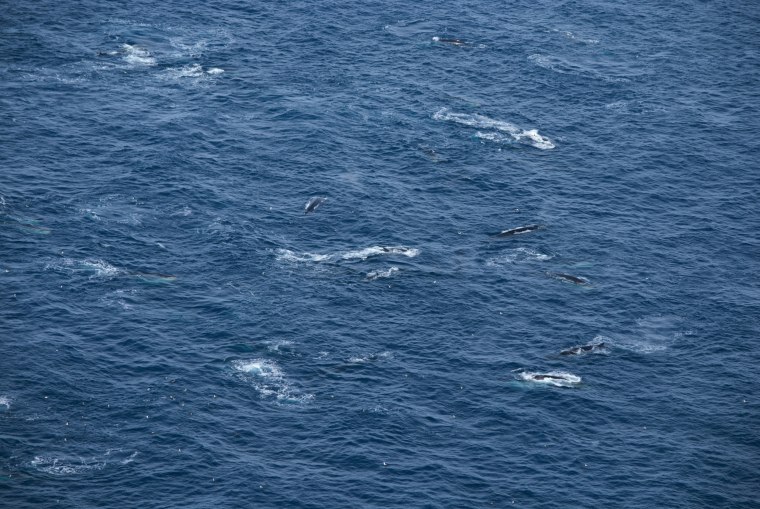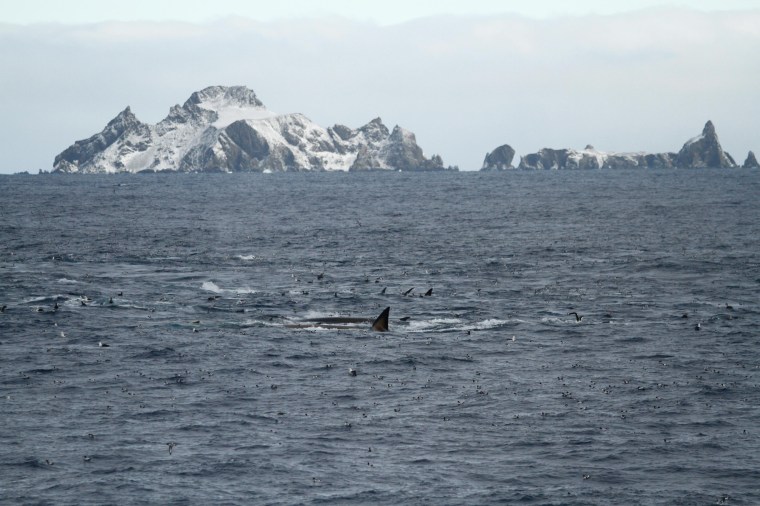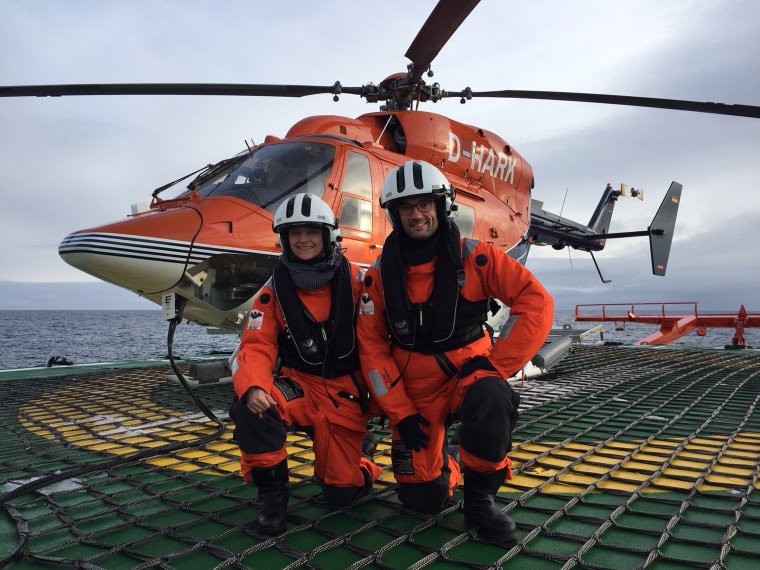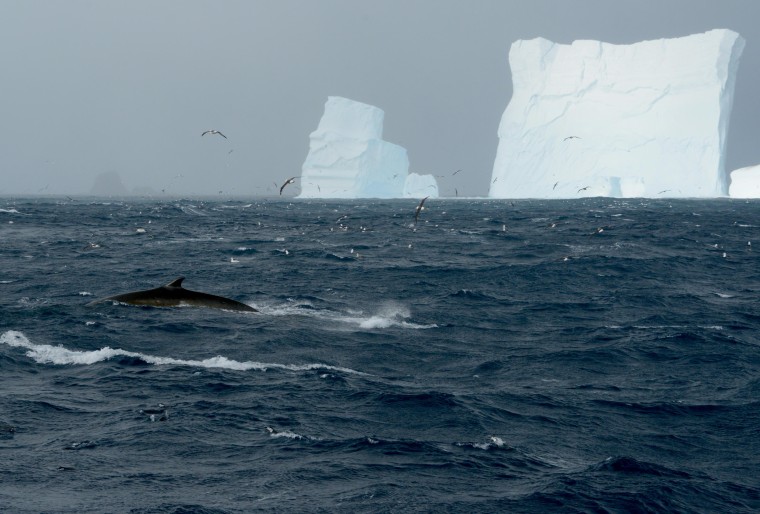The fin whales are back.
The whales, which were nearly hunted to extinction, have returned in huge numbers to their ancestral feeding grounds off the coast of Antarctica, according to research published Thursday.
In the journal Scientific Reports, researchers for the first time shared details of massive feeding frenzies among fin whales near Elephant Island. More than once, they observed about 150 whales — lunging and diving with mouths wide open — gulping down krill.
The scientists also completed abundance estimates, finding a higher concentration of fin whales there than in other regions known for sightings, including off the coast of California.
Previous research suggests only 1% to 2% of fin whales survived commercial whaling, which took off in the Southern Hemisphere in the early 20th century and continued until restrictions in the 1970s.
Documentation of feeding frenzies in densely-populated waters where whales gathered generations ago and before they were hunted at industrial scale suggests that the species has rediscovered an important habitat and that the population is recovering.

The species’ strong return to the feeding grounds rich with krill is “raising hope that fin whales are on their way to pre-exploitation numbers,” the researchers wrote in the Scientific Reports paper.
Video footage of the fin whale “aggregation,” as the researchers call it, first caught public attention in a 2019 BBC documentary series called “Seven Worlds, One Planet” that was narrated by David Attenborough, the famous British naturalist and broadcaster. The researchers on the Scientific Reports paper, who collaborated with the documentarians, added new data and further analysis of the whales.
“I’d never seen so many whales in one place before and was absolutely fascinated watching these massive groups feed,” Bettina Meyer, a co-author of the study who is a biologist and professor at the Alfred Wegener Institute, said in a news release.

Fin whales, once considered endangered by the International Union for Conservation of Nature, were upgraded to "vulnerable" in 2018. The International Whaling Commission is in charge of setting global catch limits for commercial whaling.
The quota for fin whales was dropped to zero in 1976, the study says. In 1982, the commission decided to pause all commercial whaling. Iceland, Norway and Japan are among the nations that have hunted whales commercially since.
Scientists and other observers began to notice an increase in fin whale sightings in the waters between South America and Antarctica beginning in the early 2000s, and have long suspected that the area near Elephant Island was becoming a hot spot for fin whales.
In the Scientific Reports study, the researchers quantified fin whales’ presence by using a helicopter aboard an icebreaker ship. Flying allowed researchers to survey and collect data about the whales from above and determine the creatures’ density.

Many whale species pass habits or information about feeding sites through generations. Research suggests whales pass this information through mothers.
The location of the Antarctic feeding sites might have been lost to generations of fin whales until now because their populations were so decimated and disconnected by whaling, the study suggests.
“… This could be a good sign that, nearly 50 years after the ban on commercial whaling, the fin whale population in the Antarctic is rebounding,” Meyer said.
The study says the whales’ presence could have environmental benefits because they recycle nutrients in their waste that benefit the growth of phytoplankton, which forms the foundation of the food web in the waters off Antarctica.
